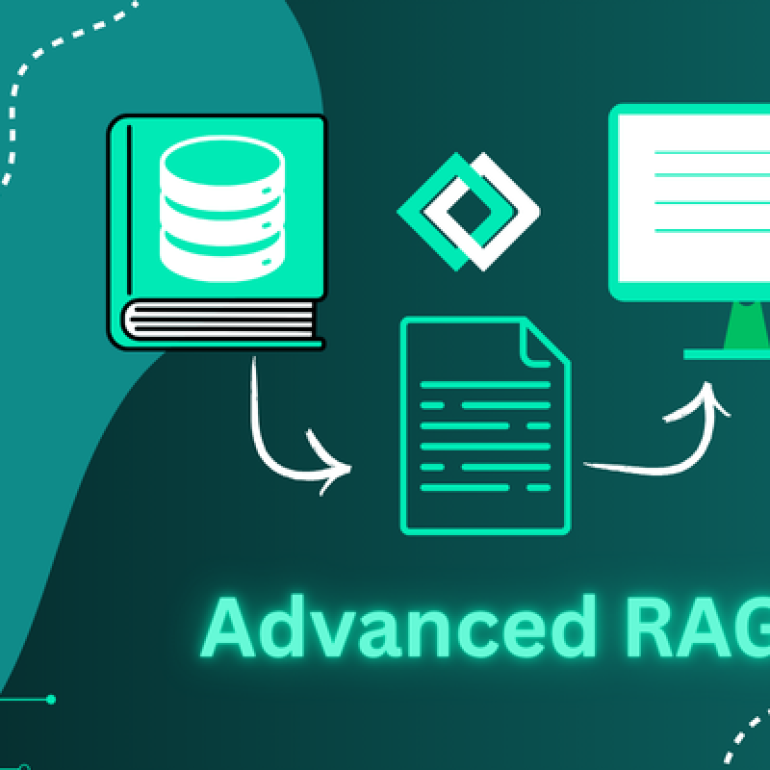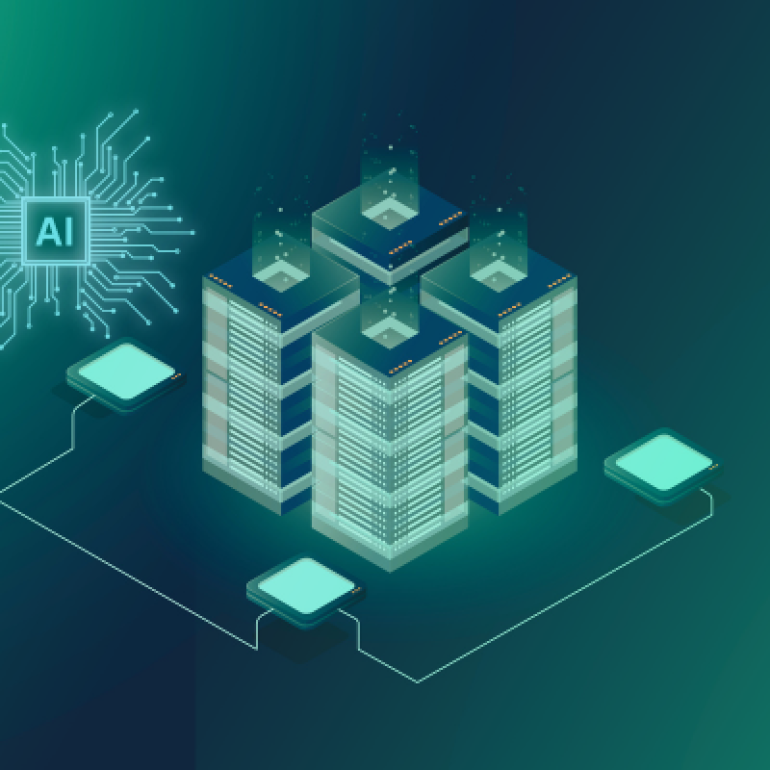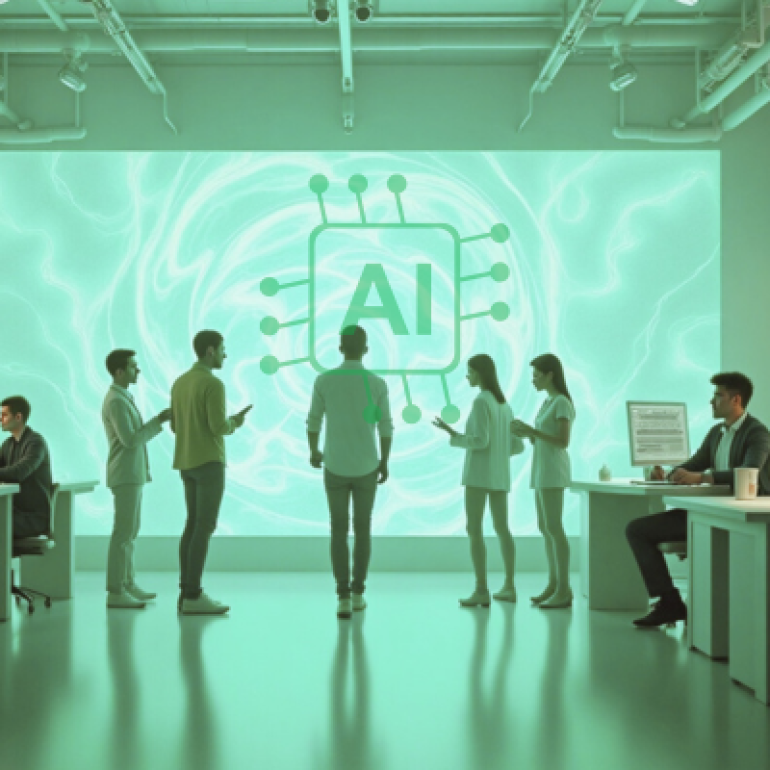- 23 June 2025
- Dr. Chandra Bondugula
AI in Medical Education
Artificial Intelligence (AI) is no longer a thing of the future in medicine. It is changing not just how patients are cared for and diagnosed, but also how medical information is taught and learned. Using AI in medical education has made it possible to teach in new ways, test in new ways, and get students more involved.

Introduction
Artificial Intelligence (AI) is no longer a thing of the future in medicine. It is changing not just how patients are cared for and diagnosed, but also how medical information is taught and learned. Using AI in medical education has made it possible to teach in new ways, test in new ways, and get students more involved. This change is very important for getting healthcare workers ready for a medical field that is becoming more digital and data-driven.
The National Library of Medicine says that “AI is being used to improve the effectiveness of teaching methods, enhance clinical reasoning, and simulate rare patient cases.” This makes medical students much better equipped.
As medicine gets more complicated, teachers are using AI to make lessons easier to give, help students learn via experience, and even create realistic situations that would be hard to recreate in real life. The use of smart technology in education is making medical instruction more flexible and effective. For example, virtual dissection tables and AI-driven case studies are being used.
What is AI in Medical Education?
AI in medical education refers to the integration of intelligent algorithms and computational models to support and enhance the learning experience of healthcare students. This includes:
1) Machine Learning (ML):
Algorithms that learn patterns from data to make predictions or decisions.
2) Natural Language Processing (NLP):
Enabling computers to understand and respond to human language.
3) Generative AI:
Tools like ChatGPT or Bard that can generate human-like text for tutoring, summarization, and simulation.
4) Computer Vision:
Used in anatomy teaching, pathology slide analysis, and imaging interpretation.
These technologies are used across various educational stages—from undergraduate medical training to specialist residencies and continuing professional development. AI enhances content delivery, personalizes learning, offers real-time feedback, and creates a more immersive training environment.
Moreover, AI plays a role in:
1) Curriculum development
2) Assessment standardization
3) Simulation-based skill development
4) Data analytics to improve teaching effectiveness
As a result, students are exposed to a highly adaptive, context-rich, and engaging learning journey.
How Is AI Transforming the Traditional Medical Curriculum?
The shift from passive to active learning is being largely driven by AI innovations. Here’s a breakdown of how AI is transforming key components of the traditional medical curriculum:
1. Personalized Learning Paths
Traditional classroom models often adopt a one-size-fits-all approach. AI disrupts this by offering personalized, adaptive learning. Intelligent tutoring systems analyze a student’s performance in real-time and modify learning pathways accordingly. For instance, platforms like Osmosis and Lecturio use AI to recommend study materials based on individual progress and retention.
2. Dynamic Simulated Patient Interactions
Using NLP, AI can simulate patient conversations where students practice taking histories, performing virtual physical exams, and making diagnoses. These AI patients respond in real time, exhibiting symptoms and emotional cues that help students develop both clinical and soft skills.
3. Assessment and Grading Automation
AI streamlines grading of essays, multiple-choice questions, and even subjective responses through advanced NLP models. This ensures:
1) Standardized evaluation
2) Quicker feedback
3) Reduced faculty workload
4. Real-Time Analytics and Feedback
With real-time analytics, students receive instant feedback on their decisions. AI can pinpoint exact areas of misunderstanding and direct the learner to remedial content. This feedback loop fosters deeper understanding and long-term retention.
5. Virtual Labs and Anatomy Tools
AI and AR/VR-enabled platforms now offer interactive anatomy tools with high resolution. Anatomage and other virtual dissection tables that use AI-guided modules are replacing learning on cadavers with 3D, rotatable, and scalable human models.
These changes are not only making the curriculum more modern, but they are also making sure that students graduate with skills that are useful in the real world.
Generative AI: A Game Changer for Medical Students
Generative AI, particularly models like OpenAI’s ChatGPT, Google’s Med-PaLM, and Anthropic’s Claude, are transforming how medical students access information and practice critical thinking.
According to Harvard Medical School, “Generative AI can quickly draft clinical notes, summarize research, and simulate patient interviews” source.
Key Use Cases:
1) Research Summarization:
Generative AI tools can digest hundreds of pages of scientific literature and offer concise, accurate summaries.
2) Case-Based Learning:
Students can prompt AI to generate rare or complex patient scenarios for self-practice or group discussion.
3) Custom Quizzing:
AI tools can auto-generate MCQs or scenario-based questions tailored to specific learning goals.
4) Simulated OSCEs (Objective Structured Clinical Examinations):
AI-powered avatars simulate clinical stations, offering a safe, repetitive, and cost-effective training environment.
What are the Benefits of AI in Medical Education?
AI offers a multitude of benefits, each aligned with modern educational needs and the demands of the healthcare industry:
1) Enhanced Critical Thinking and Reasoning
AI platforms mimic diagnostic reasoning, prompting students to defend their clinical choices. This iterative learning sharpens analytical and decision-making skills.
2) Greater Accessibility and Inclusivity
Remote learning powered by AI allows access to quality medical education regardless of geographic location. Students in underserved regions can access the same tools and simulations as those in top-tier institutions.
3) Efficient and Standardized Evaluation
AI ensures uniform grading and eliminates biases. Tools like Gradescope and SpeedGrader use AI to highlight errors and offer suggestions—saving faculty hours while ensuring accuracy.
4) Safe Learning Environment
AI-driven simulations create safe environments to practice high-risk procedures or navigate rare clinical cases without endangering patients.
5) Continuous Updates and Relevance
AI can ingest the latest guidelines, research, and case studies, ensuring that learning material remains current and evidence-based.
What are the real world applications of AI in medical learning?
1. AI-Powered Simulated Patients
Medical schools like Harvard and Stanford use AI-based virtual patients for clinical training. These avatars respond with speech, body language, and symptoms, allowing students to practice diagnosis, empathy, and treatment planning in realistic scenarios.
2. Personalized Learning Platforms
Platforms like Osmosis, Lecturio, and Kenhub use AI algorithms to analyze learning behavior and tailor content. Students get custom quizzes, spaced repetition schedules, and adaptive video content to match their knowledge gaps.
3. Real-Time Performance Analytics
The University of Toronto applies AI to monitor student progress and predict who might be at academic risk. These insights enable early intervention and customized mentorship strategies.
4. Automated Clinical Case Generation
Generative AI tools like ChatGPT, Med-PaLM, and Glass.ai are used to create complex, real-world clinical cases for training purposes—particularly useful for simulating rare or atypical disease presentations.
5. AI in Surgical Training
AI-integrated platforms like Touch Surgery and Surgical Theater use computer vision and machine learning to provide step-by-step surgical guidance and post-op performance review in VR/AR environments.
6. Assessment and Feedback Automation
Tools like Gradescope use AI to evaluate written answers, highlight errors, and provide standardized feedback, saving faculty hours while maintaining fairness and consistency.
7. NLP-Driven Communication Analysis
At Johns Hopkins, AI is used to assess student-patient interactions, analyzing tone, empathy, and clarity during OSCEs or clinical simulations. NLP algorithms flag missed opportunities for improvement in communication.
8. Digital Anatomy and Pathology Labs
Solutions like Anatomage Table and PathPresenter leverage AI for 3D visualizations of anatomical models and histopathology slides, enabling more interactive, accessible, and reusable lab experiences.
9. AI Chatbots for 24/7 Tutoring
AI-powered tutors such as ChatGPT or Claude AI provide instant explanations for clinical concepts, pharmacology, or physiology queries, acting as study partners for revision and clarification.
10. Predictive Analytics in Residency and Licensing Prep
AI tools are now helping track readiness for licensing exams like USMLE by predicting areas of weakness and recommending targeted resources or timelines
What Are the Challenges of Integrating AI in Medical Schools?
Even though AI has a lot of potential, there are a lot of hard problems that need to be solved in order to use it in medical education. These problems are technological, institutional, and ethical. To make sure that AI tools are used correctly and effectively in schools, these problems need to be dealt with in a planned way.
1) Lack of Standardization
One of the biggest barriers is the absence of a universally accepted framework or accreditation body for AI-driven educational tools. Each medical school adopts AI at different levels, leading to disparities in learning outcomes. This lack of cohesion makes it difficult to evaluate the effectiveness of AI implementations and share best practices across institutions.
2) Digital Divide
AI-based education heavily depends on access to high-speed internet, modern computing devices, and digital literacy. Students from under-resourced areas or countries with limited tech infrastructure are often left behind, exacerbating educational inequality. Addressing this requires a global commitment to equitable digital access.
3) Faculty Hesitation and Skill Gaps
Many educators are unfamiliar or uncomfortable with AI tools. Without adequate training and support, faculty may resist integrating AI into their teaching practices. There’s also a psychological barrier—some fear that AI might replace human instructors, which can hinder adoption and innovation. Institutions need to invest in continuous professional development and offer incentives to promote tech adoption.
4) Ethical and Legal Concerns
AI tools often use big datasets that may contain private information about students or patients. This makes me very worried about data privacy, consent, and bias in algorithms. AI models are also often black boxes, which means that it’s hard to see how they make decisions. Because of this lack of clarity, teachers may not be able to trust AI-based tests or suggestions.
5) Overdependence on AI
While AI can augment learning, excessive reliance may dull critical thinking, clinical reasoning, and human judgment. If students consistently defer to AI outputs without questioning or contextualizing them, it could hinder their ability to handle nuanced real-world scenarios. Curriculum designers must ensure that AI complements, rather than replaces, human learning experiences.
6) Curriculum Overload and Integration Complexity
Introducing AI components requires revising already packed curricula. Medical schools must find a balance between adding AI literacy without overwhelming students or displacing essential clinical content. Seamless integration demands strategic planning, interdisciplinary collaboration, and allocation of time and resources.
Addressing these challenges will require coordinated efforts among academic institutions, policy makers, edtech companies, and healthcare professionals to ensure AI’s safe, ethical, and impactful adoption in medical education.Despite its promise, integrating AI into medical education isn’t without obstacles:
7) Lack of Standardization
No universally accepted framework or accreditation exists for integrating AI tools into curricula.
8) Digital Divide
Not all students have access to reliable internet or compatible devices, especially in developing nations.
9) Faculty Hesitation
Instructors often lack the training or confidence to adopt AI tools. There’s also a fear of being replaced by technology.
10) Ethical Concerns
Use of student and patient data raises serious privacy and consent issues. AI bias and transparency are also critical concerns.
11) Overdependence on AI
There is a risk that students may rely too heavily on AI, potentially weakening their clinical reasoning or creativity.
Future Outlook: Is AI the New Standard in Medical Training?
AI is rapidly evolving from a supplementary tool to a foundational component of medical training. The next decade will likely witness:
1) AI-integrated assessments on national licensing exams
2) AI-generated digital twins for personalized skill-building
3) Smart labs that adapt in real time to students’ diagnostic patterns
Global AI education networks that standardize medical training worldwide
Medical schools will need to redesign curriculums, re-skill faculty, and establish new ethical frameworks to accommodate this shift.
Conclusion
Human Expertise and AI in Harmony
AI should not be seen as a replacement for human educators but as a powerful ally. It enhances the capabilities of faculty and students alike, offering scalable, equitable, and highly effective education.
As SHC Technologies continues to innovate in the healthcare tech space, we recognize the role AI plays in shaping smarter, safer, and more capable healthcare professionals. Investing in AI today means preparing for a future where medicine is both human-centered and data-empowered.




